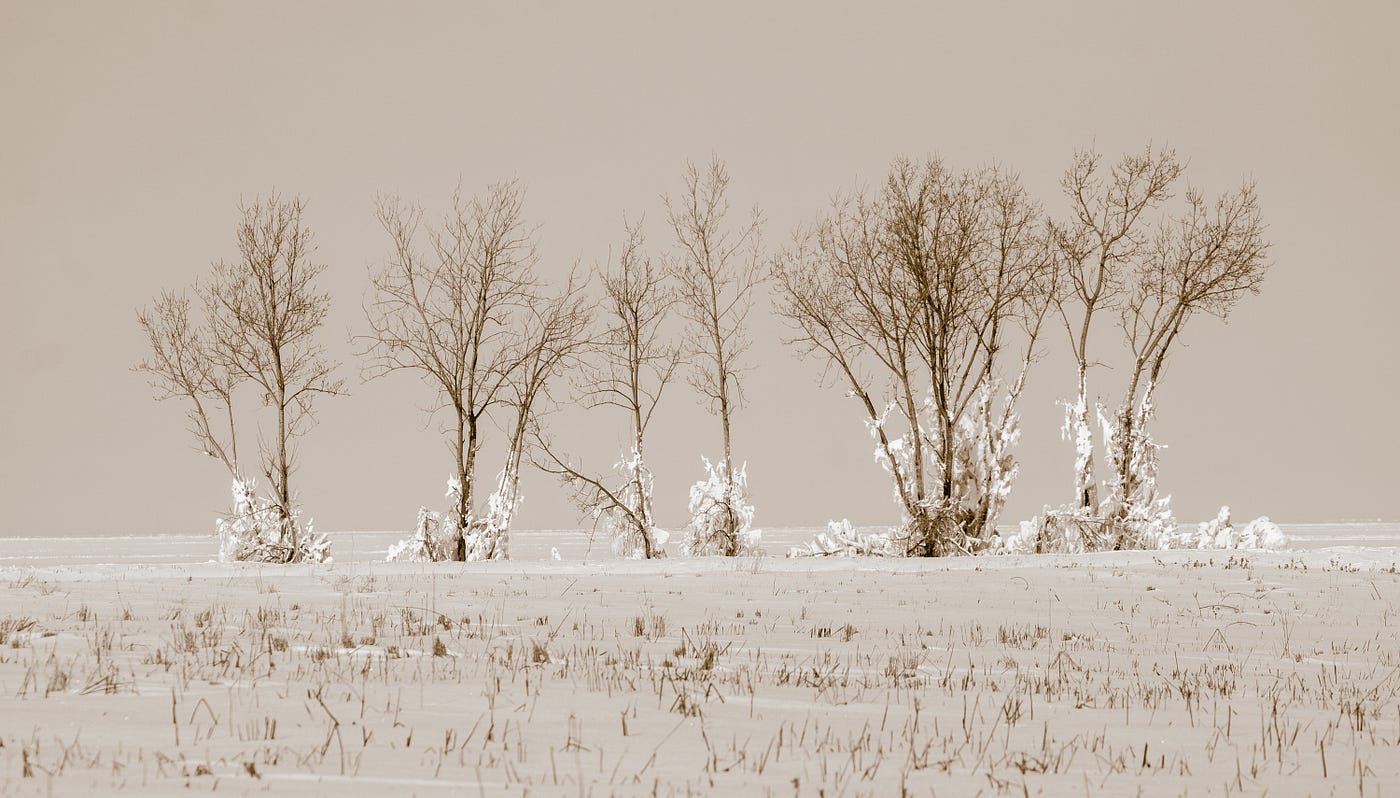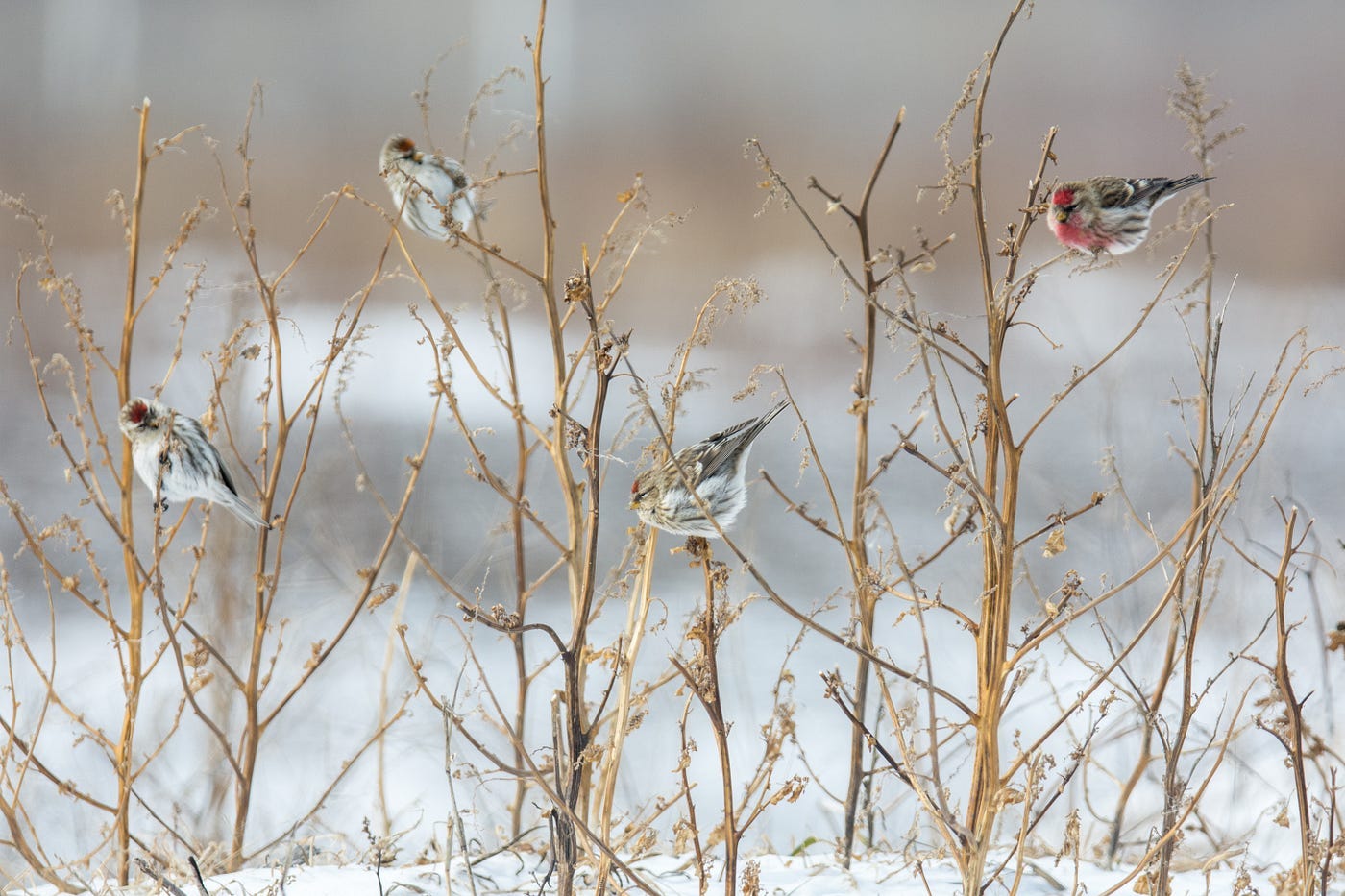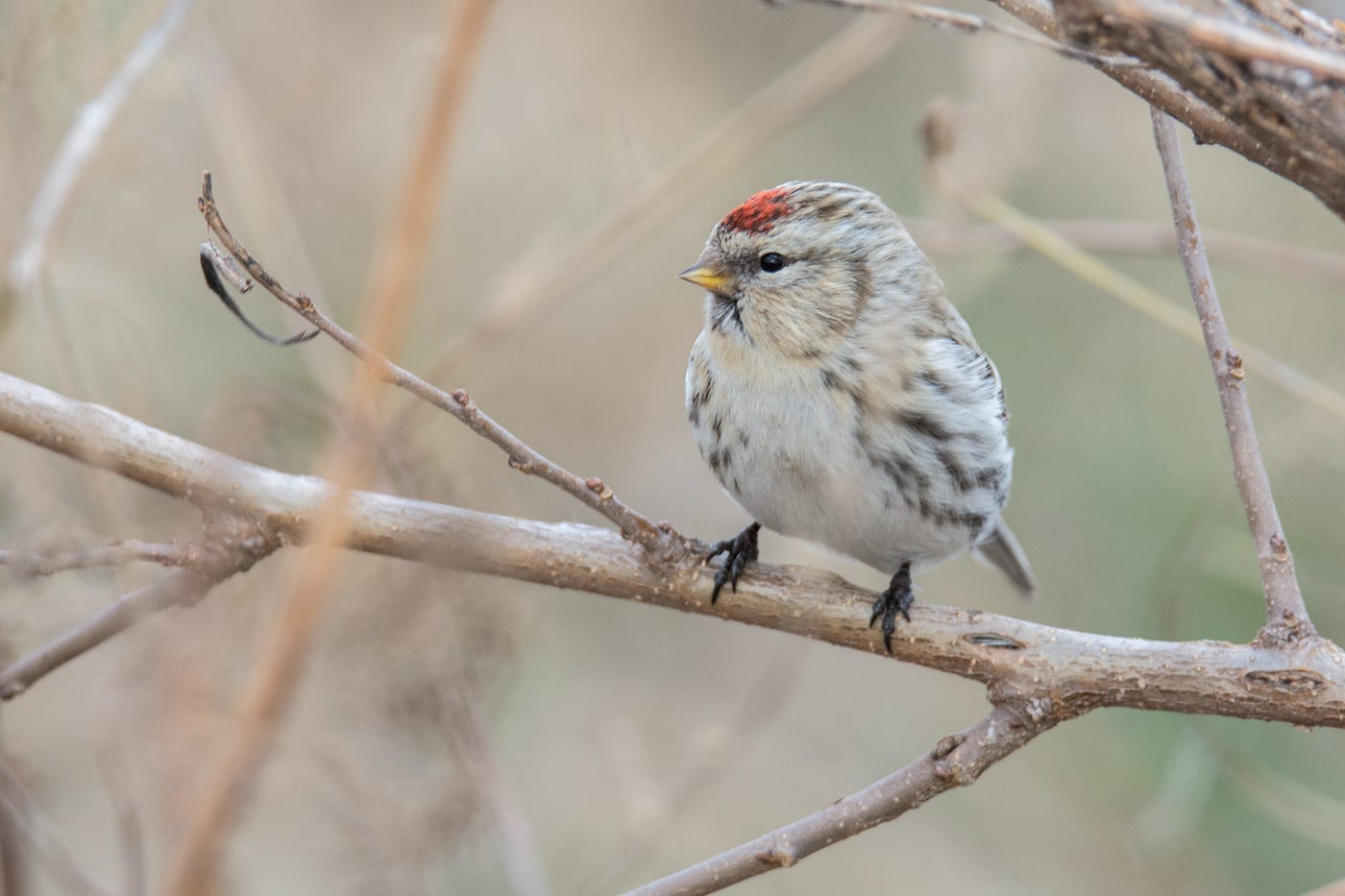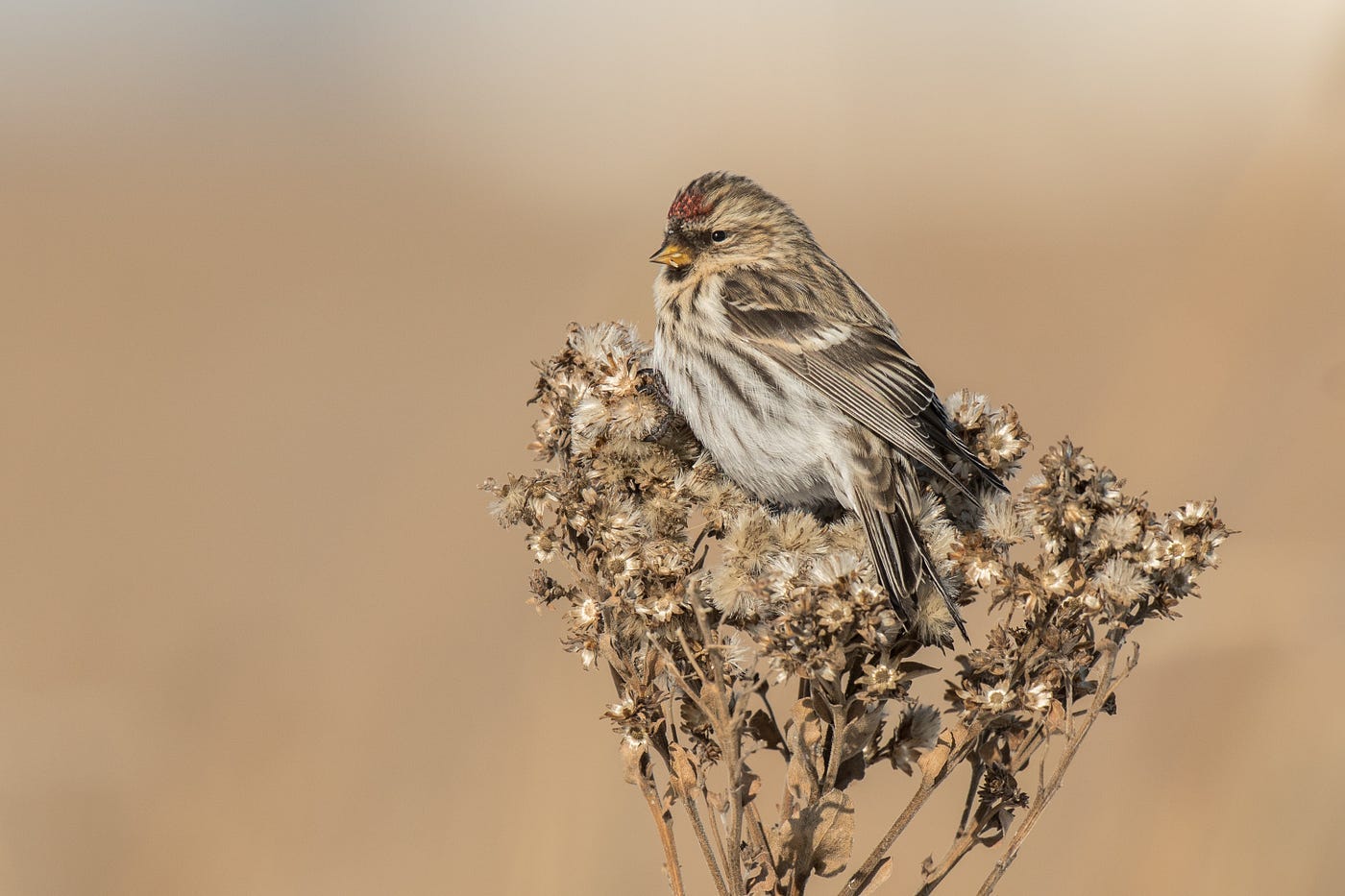A Redpoll By Any Other Name
Believe it or not, there was a time—back before I fell hook, line and sinker for Park 566—when I frequented other South Side parks besides Park 566. In late December 2018, toward the end of my first year monitoring Park 566, I was walking Jackson Park’s Wooded Island when I came upon a note tacked to the trunk of the massive oak tree in the center of the island.
To: Redpolls of Jackson Park
From: Tree Sparrows of Park 566
Re: Your travel plans for winter, 2018-19
From neighbors who have recently visited Jackson Park to our north, we learned that you have returned to the Chicago area from your summer home in the boreal forests of northern Canada. Welcome back to the warm Chicago winter!
We are writing to express our disappointment that you have chosen to stop in Jackson Park this winter, instead of continuing on just a few more miles south to our neighborhood. Call us spoiled, but it was very nice having a flock of you with us last winter. Even on the coldest days of January and February, we knew we could count on your cheery "dreeee" call, your constant energy, your tiny touch of red in the browns and grays of desolate Park 566.
Sure, the Chicago Park District has shaved our park bare as they work to eradicate invasive plants, so good hiding spots are a bit scarce. But the brush clumps are still there in the sand piles where we hung out so often last winter. And we are not broadcasting this—so the Canada Geese don't crash our party—but the Park District has recently seeded the entire park with a variety of tasty prairie plants. It's easy pickings right now.
The skies here are much too quiet without you. Pay us a visit!
The missive was signed by a dozen or so American Tree Sparrows as well as a few Snow Buntings. There was also the signature of one American Kestrel, who no doubt had other reasons for wanting the Redpolls to visit Park 566.
I added my signature. It's true, I was spoiled by the Redpolls who hung out during the 2017-18 winter in the nondescript Park 566. That was the first winter of my seven-year project.
That’s when winters were winters. Young birders who frequent Park 566 today don’t know how good they have it. Back in my day—seven long years ago—winters were brutal. Walking the lakefront sent icy daggers to the heart. In that first January of my project, when I followed my prescribed 3.3-mile walk, it was uphill and into the wind all the way from the north end of the park to the slip on the far south end. And then it was into the wind again, and even steeper uphill on the return route. But hey, I’m a survivor of the bitter cold, blizzardy Chicago winter of ’78. They just don’t make winters like that anymore. I could take whatever Park 566 might throw at me.
Well, in a manner of speaking.
Actually, do you see that shapeless, dark mass there, hunched shamelessly between the piles of sand in the middle of the park? That’s no deer, or coyote, or Short-eared Owl. That’s me, hunkered down, curled in the fetal position, hands between thighs, counting my fingers to make sure none have fallen off. Those six-foot high mounds of sand were the only place in the center of the park to find some bit of respite from the bitter west winds during the mile-long trek back to my car. More often than I like to admit, I huddled in among the mounds, where the blasting winds were broken into swirling eddies, and the cold was at least a little less bitter.
There was another reason I stopped among the mounds. My prescribed route took me through the sandpiles because I knew that the Redpolls also liked to hang out there. The piles were mostly barren, with tufts of brown grasses scattered here and there on their flanks. Tucked in a particularly secluded dip between the piles, a mulberry had established a foothold, where it held on for dear life against the howling wind. That mulberry stands over 15 feet tall today, but it was barely shoulder high in 2018. It had survived the Park District’s burns of the park—the only shrub in the otherwise denuded center area of the park.
The Redpolls and I were glad it had survived. Sometimes I flushed them as I approached the mounds where the mulberry was. But more often than not, I found the tiny shrub just huddled there, its tiny branches empty and waiting for company. So, I would curl myself in a ball, get as comfortable as possible under the circumstances and—with the mulberry—wait for someone to join us.
Often the first to visit were American Tree Sparrows. A group of six or eight would make their way across the barren park and settle among the sandpiles, where they would scruff in the grasses for a few minutes, tinkling back and forth among themselves like feathered crystal wind chimes, before flittering off and leaving just me and the mulberry and the wind again. Some days, after the sparrows left, I had to content myself with the respite from the wind and the company of the tiny mulberry tree.
But on a good day, as I huddled there, I would hear a faint, cheery chorus of chirp-trills carried on the icy wind—very different from the tinkling crystal chatter of the American Tree Sparrows. And suddenly a riot of Redpolls would swoop in and take ownership of the tiny mulberry. More than a dozen little balls of energy, flitting from ground to branch to ground, sending puffs of snow in the air as they spun, calling to each other like little buzzing wind-up toys under the Christmas tree. You could almost hear the tiny mulberry tree giggle with delight. The wind calmed to a whisper, and I felt almost warm.
The Redpolls tittered and flittered about like they owned the place, hanging from stalks of grass, scraping in the dirt. They would eventually get their fill of whatever tiny seeds they were finding under the snow and then disappear in a whoosh—gone as suddenly as they had arrived. They never stayed longer than ten minutes. I’m convinced that if they had, the mulberry might have started sprouting leaves just from the excitement.
I was excited for another reason besides the contagious joy of those colorful balls of energy. Mixed in with the dozen or so Common Redpolls was one bird who was different. It was somehow cuter than the others, as if that could be possible—frostier in color than the others, with less streaking on the underbelly, and with a little button-nose of a bill. It was a Hoary Redpoll, a relatively rare relative of the Common Redpoll. Hoary Redpoll was a “lifer” for me, and I was enjoying every minute of that tiny bird’s presence at Park 566. The thrill of spending time with such a rare visitor turned my numb fingers and chapped lips into just minor inconveniences.
Ah, those were the good ol’ days, when winters were cold, Common Redpolls were common, and Hoary Redpolls were Hoary Redpolls. Alas, they don’t make Redpolls like that anymore. You can wait at the sandpiles of Park 566 every day of every winter, until that mulberry tree grows to thirty feet tall, and you will never again experience the thrill of a visit by a Hoary Redpoll. It just isn’t going to happen, because we now know that Hoary Redpolls never existed.
Let me rephrase that. The redpolls that visit the Chicago area in winter spend the summer breeding months in Alaska and northern Canada. Those that nest in the furthest north region of the breeding range are markedly lighter in color. These lighter colored redpolls—Hoary Redpolls—were long considered a separate species from their darker relatives, the Common Redpolls. Every winter, when redpolls—Common and Hoary—migrated south, avid Chicago-area birders were presented with the fun challenge of picking out the occasional Hoary Redpoll mixed in with flocks of Common Redpolls. Sometimes the difference is striking, and Hoary Redpolls can easily be distinguished from Common Redpolls. But there are often border-line differences in plumage, leading eBird reviewers to agonize over photos of redpolls, trying to determine whether the birds were sufficiently frosty, sufficiently cute to be legitimately identified as Hoary Redpolls and added to a birder’s life list.
Not anymore. In July 2024, based on years of genetic evidence, the American Ornithological Society (AOS) Checklist Committee determined that the Common Redpoll, the Hoary Redpoll and the Lesser Redpoll (of Europe) are all one species. All are known now simply as Redpoll. The eBird reviewers now get to spend their winters worrying over Greater and Lesser Scaup, Eastern and Western Meadowlark, Smith’s and Lapland Longspur.… And avid birders can still try to suss out the rare hoary Redpoll mixed in with the darker Redpolls. They just can’t add a species to their life list.
Meanwhile, back at Jackson Park in late 2018, where I had just signed the American Tree Sparrows’ letter to the Redpolls. It seems the Redpolls never got the message. Or maybe they chose to ignore it. For the entire winter of 2018-19, not a single Redpoll—Common, Hoary, whatever—was reported at Park 566, by anyone. It just wasn’t the same without them; their absence made that winter feel colder than usual. They were back again in 2019-20, though, and every year after—both dark-plumage birds and hoary-plumage types.
To this day, when I see a frosty white, hoary Redpoll that is clearly of farthest north provenance, I wink, like a grandfather to his teen-age grandchild: I knew you back when you were a separate species.
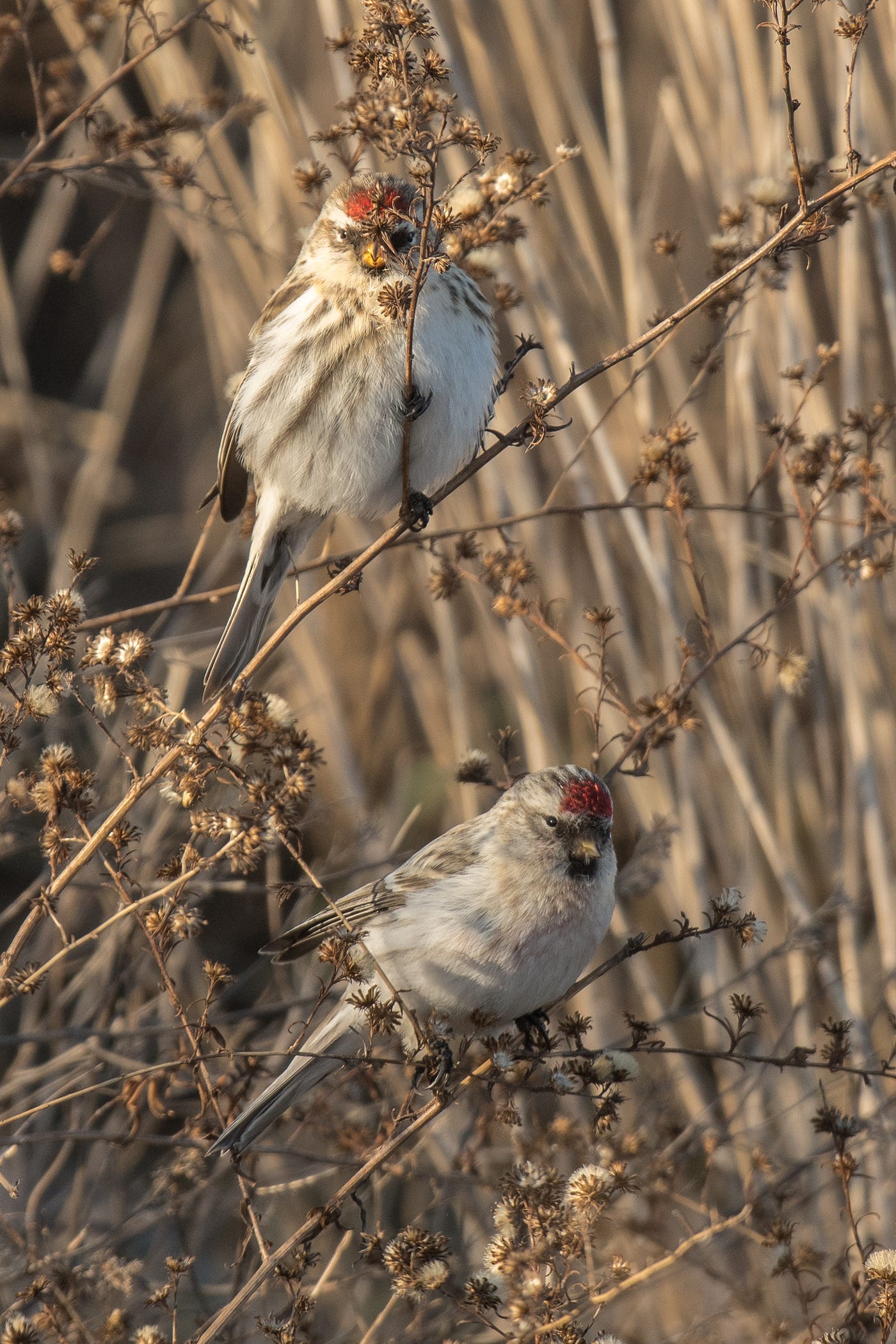
(Originally published in “Of Feathers and Steel” Medium)




